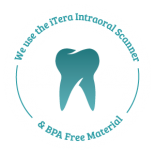KNOCKED-OUT BABY TOOTH: Due to the risk of damage to the permanent tooth, primary teeth are not re-placed if knocked out. KNOCKED-OUT PERMANENT TOOTH: Time is of the essence. The goal is to replace the permanent tooth in the socket as soon as possible. Only handle the tooth from the crown; do not touch the root. If dirty, rinse briefly with water and replace immediately. After putting the tooth back in the socket, hold in place by biting on a paper towel or wash cloth, etc. If the tooth cannot be replaced, it must be kept moist to prevent the cells from dying. Place tooth in milk, saliva, or egg yolk and call us as soon as possible. After one hour, it is not advised to replace the tooth, so it’s vital to move quickly in a pediatric dental emergency like this.
BROKEN TOOTH: If possible, find the broken fragment and call us as soon as possible. Most of the time, the broken piece can be re-attached using safe adhesives.
TOOTHACHE: Rinse with warm salt water. Brush and floss the area to remove trapped food/bacteria. Call our Las Vegas children’s dentists as soon as possible for an evaluation. Over-the-counter pain medications can be effective until your child can be seen by one of our experienced pediatric dentists on staff.

